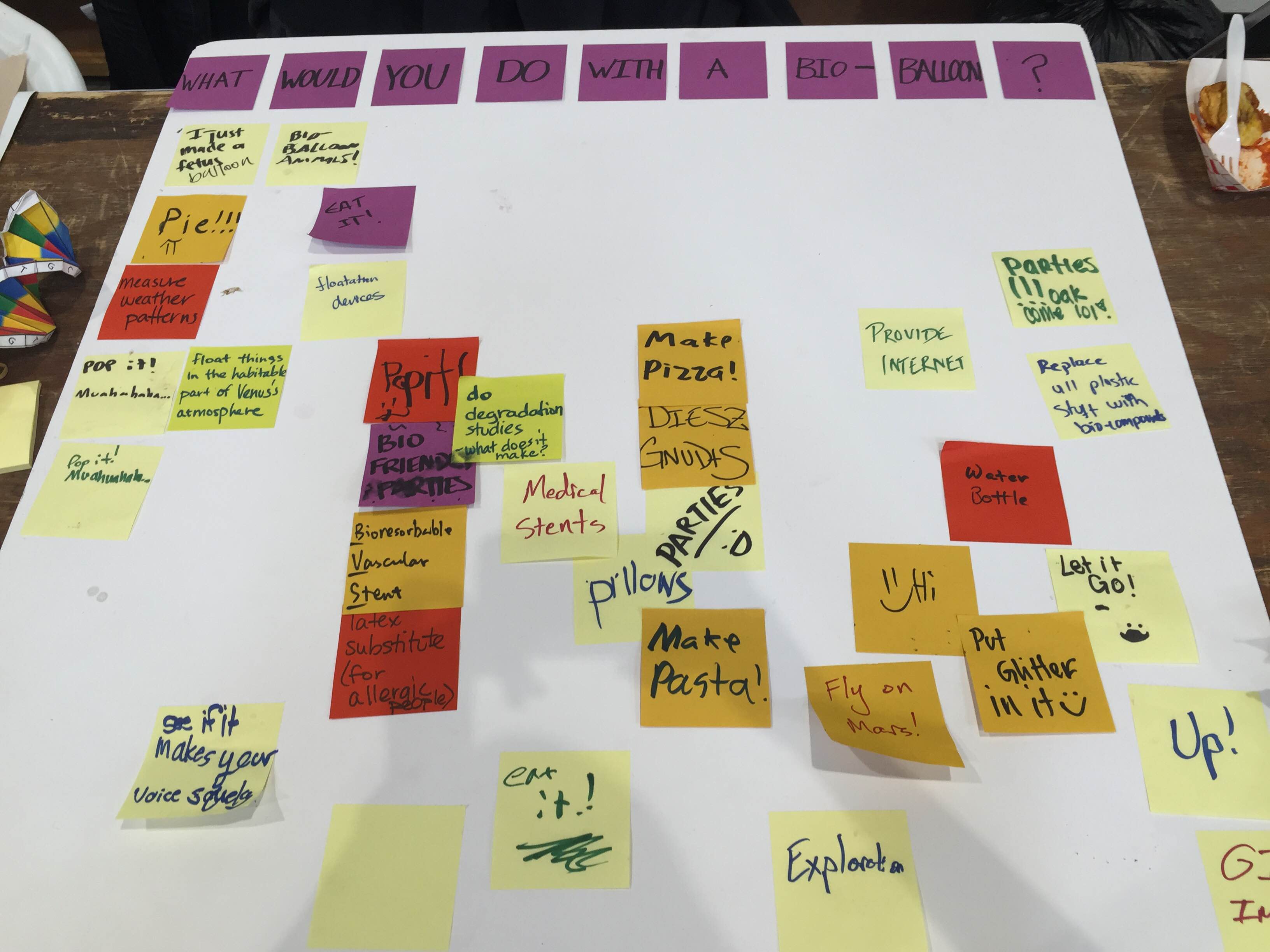Bay Area Maker Faire
On the weekend of May 20-22, the Stanford half of our team designed and presented a booth at the 2016 Bay Area Maker Faire. Every year, the Maker Faire brings together self-identified "makers" - whether hobbyists, professional designers, student science teams, scientists, artists and/or performers - to share their work and inspire one another. We worked one of over one thousand booths presenting to many thousands of visitors.

We developed an educational program for our booth primarily directed at kids without previous background in synthetic biology. We led kids and their parents through strawberry and banana DNA extractions, explaining the mechanisms at work and giving kids "DNA necklaces" - PCR tubes with fruit DNA threaded on multi-colored string - to take home as souvenirs. We put together a "DNA Origami" station where kids could fold colored paper into DNA double helices. We used this activity as an opportunity to explain DNA structure and provide a simplified explanation of the central dogma. We also had a Bloony station at which kids could blow up balloons. At this station we explained our iGEM project and challenged people to rethink the definition of a balloon. Finally, we put together a crowdsourcing activity: we took a blank styrofoam board and wrote at the top, "WHAT WOULD YOU DO WITH A BIOBALLOON?" We left out Post-It notes and markers, and passersby contributed to an ever-expanding brainstorming map.



At the World Maker Faire in New York, the Brown University portion of our team introduced young and aspiring scientists to the world of synthetic biology. Over the course of the two-day event, the team interacted with thousands of attendees, giving individuals insight into the day by day life of a molecular biologist. Our team’s booth consisted of two hands-on activities designed for audiences of all ages and knowledge levels. Using paper cutouts, team members took turns walking subjects through the process of assembling a plasmid to expressing a chromoprotein gene of their choice. Individuals then glued their plasmids onto a paper template representing a wild type E. coli, while team members explained the methods of transforming host cells in the lab. Finally, gene expression was represented through a ‘phenotypic change’ that we demonstrated by overlaying the wild type E. coli with a colored paper cutout with respect to their gene of choice. Younger members loved the activity!
On another portion of our stand, teammates let individuals extract DNA from strawberries and bananas based on the procedure shown in the Bay Area Maker Faire banner above. Children and adults alike were fascinated at the ease with which large amounts of DNA could be accumulated and visualized. Our team answered many questions such as “Why bananas?” or “Why strawberries?”, to which we responded by detailing the octoploid nature of strawberries and the triploid nature of bananas. Some young attendees mixed their finished banana and strawberry DNA products, exclaiming, “Look, I made a bananaberry!”
To more knowledgable, older attendees and Maker Faire Editors, our team members detailed the intricacies of our project, highlighting the sustainability of creating a biodegradable balloon membrane. After many iterations of our interactive demonstrations, our team had created decent amounts of waste, which we sorted into recyclables, compost, and trash. Midway through the second day of the Faire, our team was awarded an Editor’s Choice first prize blue ribbon in sustainability! At World Maker Faire this year, Stanford-Brown iGEM disseminated a positive atmosphere around the work of all iGEM teams and synthetic biologists in general!
To more knowledgable, older attendees and Maker Faire Editors, our team members detailed the intricacies of our project, highlighting the sustainability of creating a biodegradable balloon membrane. After many iterations of our interactive demonstrations, our team had created decent amounts of waste, which we sorted into recyclables, compost, and trash. Midway through the second day of the Faire, our team was awarded an Editor’s Choice first prize blue ribbon in sustainability! At World Maker Faire this year, Stanford-Brown iGEM disseminated a positive atmosphere around the work of all iGEM teams and synthetic biologists in general!

Interviews
We conducted video interviews with a handful of leaders in science and in synthetic biology: Dr. Lynn Rothschild, Dr. Jill Tarter, Dr. Jim Head, and Maria Chavez, Director of Community Engagement at Biocurious, a community biohacking space in Sunnyvale. We ultimately decided to convert these videos into podcasts and team up with Team Exeter to reach a greater number of people. To learn more about this collaboration, click here.

